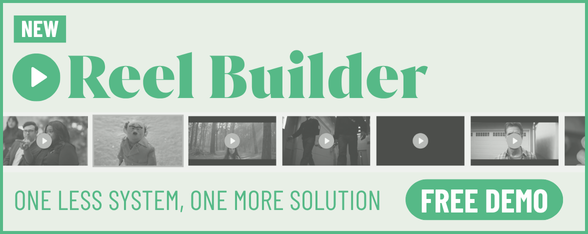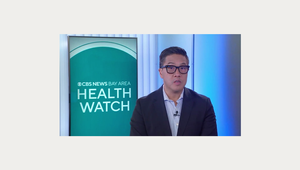
Creativity Squared: Shu Hung’s Inner Library Child

Shu Hung is the new executive creative director at AKQA's Los Angeles studio. Shu has worked on marketing and digital strategy for Nike Women and Nike Sportswear, was global creative director at UNIQLO, and most recently led the creative team at Everlane. She is also the founder of Table of Contents, a physical and digital retail platform known for bringing avant-garde design to the Pacific Northwest and beyond.
As a creative leader, Shu has spoken at many prestigious conferences, universities, and events, including the Garage Museum of Contemporary Arts, Moscow, in 2019, D-Ford, Ford Motor Company's human-centred design and innovation group in 2020, and Stanford University Fashion X in 2022. Shu was also an Executive Sponsor and founding member of KIN, Everlane's AAPI Employee Resource Group, in 2021 and 2022.
She begins her tenure at AKQA alongside the newly appointed managing partner Jabari Hearn, reporting into AKQA’s North American President, Tesa Aragones. This appointment follows AKQA’s recent announcement to double the number of people working at its studios in the US over the next five years to 2,500 professionals.
We were keen to get into the creative mind of Shu, and you can too via her Creativity Squared below.
Person
I’ve always considered myself a problem-solver before anything else. So perhaps I’m a creative problem-solver.
My personality is informal and easy-going. I laugh easily and often.
I see the interconnectedness of things in the world. I am constantly connecting the dots to figure out how to relate to people and places.
All humans have the capacity to be creative. Creativity is part of our experience and manifests in different ways. In that sense, it’s innate. But through learning and engaging with the world, one’s creativity is honed. Whether through business, personal projects, arranging your closet a certain way — I consider all of it forms of creativity.
I’m an introvert that’s had to learn how to appreciate being more extroverted. I am very engaged and really enjoy interacting with people, but I also need a lot of downtime. I have always been fascinated by extraverts and am inspired by their innate skills and personalities.
I like daily, small routines that set the stage for the rest of my day. A morning stretch, coffee and NPR (National Public Radio), a brisk walk. When it comes to being in one place or having a regular work routine, I find I get bored easily. I love the uncertainty of travel and the spontaneity of breaking up the day. One of my favourite things is to develop routines when I’m travelling, even if they last for only a few days.
I love exploring and opening up my world to completely different inspiration points. For example, I find music and sports really inspiring, though seemingly disparate on the surface. When I’m working through a creative problem, I love going out into the world and then keeping my eyes open for ways into the brief. You never know where you’ll find inspiration and the world outside is full of solutions.
Product
To judge a piece of creativity, I think about the idea and try to see it within a contextual or cultural framework. Does it solve a problem, answer a question, inspire an action or reaction? Work needs to be leading — it can’t just exist for its own sake. I look at the level of execution and consider quality to be a defining trait of good work. I use the phrase ‘high quality’ a lot when it comes to creative because I think ideas need to be executed well in order to be successful.
I’m proudest of my work at Nike, particularly the campaigns that bridged multiple touchpoints. My favourite project was called Pitch Perfect, for the 2010 World Cup in South Africa, where we did a live event that connected to a streamed concert, physical products and a community activation. At the end of the day, it was a beautiful, fun party for people in the neighbourhood that happened to be livestreamed to millions of fans around the world.
The output right now is interesting to me, particularly graphic design. I’m seeing so much talent in that space. It always feels fresh and unencumbered by tons of brand messaging and marketing.
Process
I really enjoy researching projects and do my best to immerse myself into whatever topic I’m solving for. Going deep into the context and history of a brand or product reminds me of my inner-library child — that kid who would just spend hours falling into a rabbit hole with books and magazines. From there, I’ll keep my eyes open as I’m out and about, to seek answers in the environment or daily life. I find that the brief in my head yields answers in real life, especially if I’m awake to them. I love Google Image Search as a first point of contact, but I also love physical books, museums, galleries and simply chatting with friends. I do ‘focus groups’ of one in order to get a personal understanding of a topic.
I am constantly collecting references, books, magazines, images, screenshots, short films and bits of insightful writing. I don’t start with a blank sheet but like to have my own personal archive of ideas available.
Press
I grew up the daughter of Chinese immigrants, in Seattle, Washington. It was an intergenerational household where I was raised by my grandmother, Ruth, who was a scientist and medical researcher at the university. She got me hooked on reading and thinking of books as a way to unlock my imagination. As a teenager, I was surrounded by grunge music culture and was compelled to join a female punk band, which sowed the seeds of my creativity. We made music but also created a visual language for the band.
I studied film in college and made a couple of documentaries — I love talking to real people and hearing their stories. I started my career during the first dot com boom and taught myself how to use Photoshop and Illustrator. From there, I had a series of jobs as a graphic designer and worked my way up the agency chain, from art director to creative director, eventually switching over to the brand side at Nike.
The beauty of working in-house for a brand, especially for someone on the creative side, is that you get to understand the business intimately. You’re looking at numbers, working cross-functionally, sometimes in product development, human resources, finance, to come up with solutions. You also get to know, understand and love customers because they will make or break your business. The idea of a return on investment was huge while on the client-side — creative ideas were only as good as how they could help build the brand and business. Having that sensitivity to the business and to the customer is critically important to keep in mind.
There is also a lot of creativity on the client side — most client partners came from agencies or are designers and creators themselves. A lot of the time, they want to collaborate to solve a problem and know that there’s no silver bullet for solving their business problem that will come from the outside. You will never know their business as well as they do but there is almost always an appreciation for a view from the outside, curiosity and respect for their business (and sometimes business pain) and engagement on what they’re worried about.















